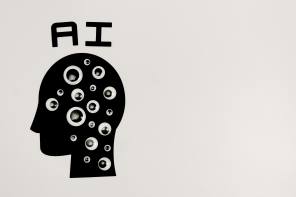

A combination of digital, hybrid and traditional advice is the key to bringing down the cost of advice and closing the advice gap, according to a report from EV.
EV’s report ‘Hybrid and Digital Advice: Driving Transformational Change, at Last!’, published today (April 25), claims there are “clear opportunities” for advice firms to use digital and hybrid advice as a part of their propositions.
According to the financial planning software provider, digital and hybrid advice makes it simpler and more cost-effective to advise clients, while also giving clients another advice route which fills the gap between guidance and traditional advice.
EV suggests digital advice journeys can cater to a different sort of clients with lower assets than those who would normally take traditional advice.

Its model (shown above) suggests guidance is the first form of help clients can receive. EV said about this stage: “Consumers can discover information (‘facts’) about investments and financial planning and, by modelling alternatives, set realistic ‘objectives’ for their financial plans.”
The next stage is digital advice which provides a recommendation together with an advice explanation in the form of a suitability report.
“Algorithms generate the advice, and there is no planned intervention or support provided by advisers. This model currently only works for simple advice on, for example, Isas and general investment accounts,” the report stated.
In a hybrid advice process, the next stage, individuals start by using a digital process, for example, completing the initial fact find and straightforward questionnaires, before being passed to a financial adviser to complete the process.
EV said: “Greater automation of the process is then possible depending on the advice required, with the production of the suitability report driven by built-in algorithms. Essentially the advice becomes increasingly digitally driven.”
The final stage is full traditional advice where advisers provide recommendations to clients on their finances.
But EV pointed out that traditional advice is expensive to deliver, owing to ever-increasing regulations, insurance requirements and the cost of time required to be spent serving the client.
“The deployment of technology and algorithms can shoulder some of the burdens and reduce adviser input, substantially reducing the cost of giving advice,” it suggested.
Cost reductions
Savings of about 50 per cent of an adviser’s time can be achieved through a transition from a digital process to adviser-delivered advice, according to EV.
By having more of the advice process digitised, the amount of time advisers spend on administrative activities will reduce, such as dealing with simple advice cases and the production of suitability reports.
Instead, advisers will spend more time on higher value activities, such as explaining issues, giving recommendations and dealing with complex cases.
EV said there is no one definition of hybrid advice.
“Firms will have different views over how much advisers are involved, whether non-advisers are deployed to hold the consumer’s hand during the advice process, how much effort is put into improving advice algorithms, how quickly the automation of advice is introduced, and how additional aids based on artificial intelligence are introduced,” the report stated.
“The essential point here is that the nature of the transformation and its speed will depend on the consumer base (individuals’ sophistication and wealth) and the scope of the advice offered. There is no single recipe, but what will be common to all is the potential to transform the way advice is delivered.”
Chet Velani, managing director of EV, said the company had seen a “marked increase” in financial services brands taking an interest in digital and hybrid advice.
“However, there is little evidence to date that this interest in hybrid advice has yet begun to drive transformational change,” he added.
For this to happen, hybrid and digital advice must become fully integrated into financial services providers’ customer propositions, Velani said.
“Hybrid and digital advice must be positioned between guidance-assisted execution only and traditional advice to enable customers to move seamlessly between these options according to need and preferences,” he said.
“Currently, most of the development activity is focused on hybrid and digital advice as a separate channel or is confined to strategic investments by established brands in start-up D2C digital advice businesses. We are, therefore, only in the ‘foothills’ of transformational change.”
amy.austin@ft.com



